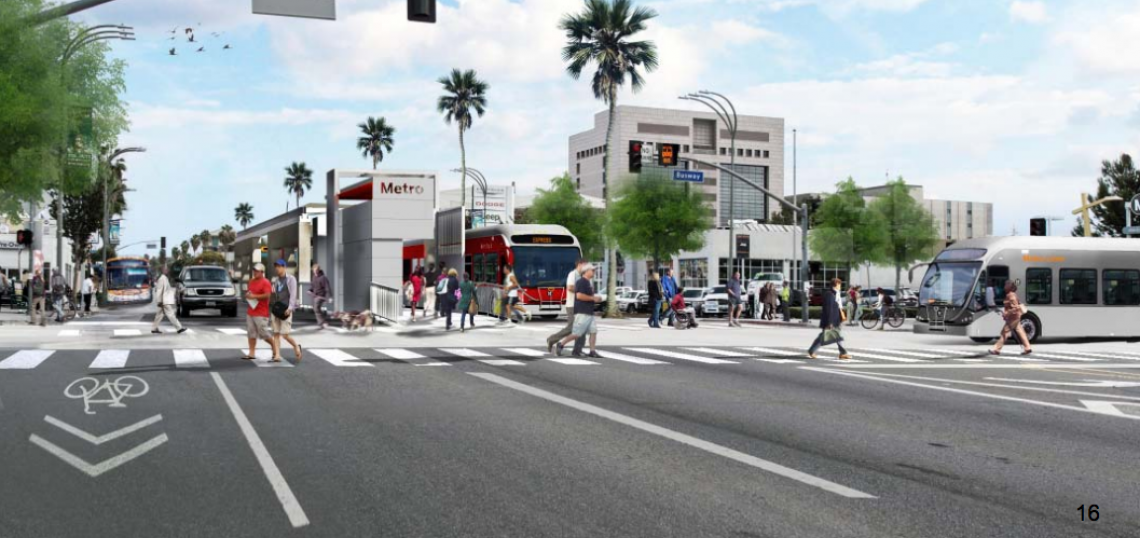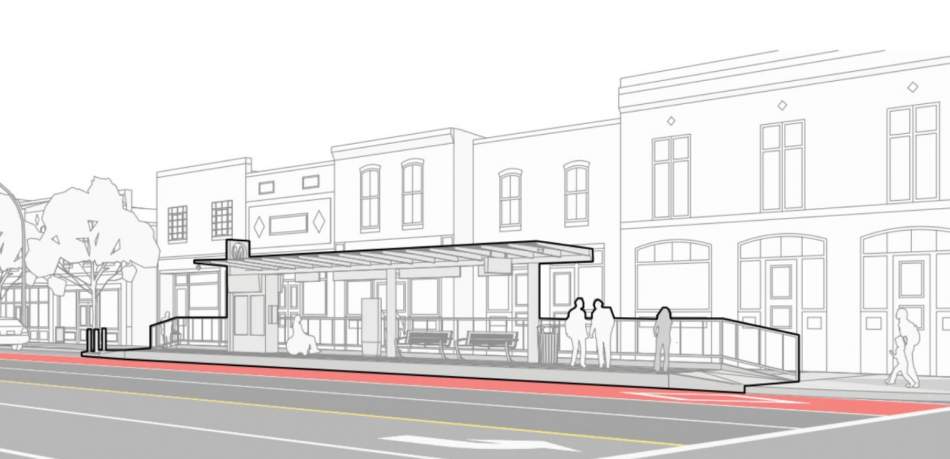A staff report scheduled for the March 17 meeting of the Metro Board's Planning and Programming Committee recommends five corridors where the transportation agency could pursue new bus rapid transit lines.
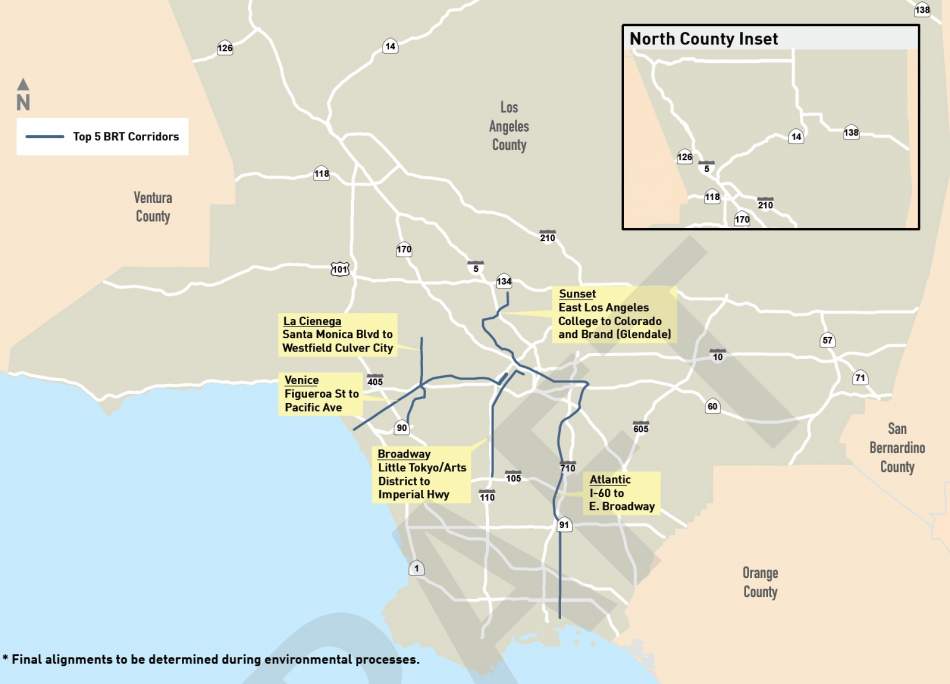 Top five corridors recommended by Metro staff for future bus rapid transit linesMetro
Top five corridors recommended by Metro staff for future bus rapid transit linesMetro
The corridors identified by Metro staff are as follows:
- Atlantic Boulevard from the East Los Angeles L Line terminus to Downtown Long Beach - a 19.64-mile corridor with moderate ridership, access to industrial jobs;
- Broadway from Little Tokyo Station to Imperial Highway - a 9.64-mile stretch between Downtown and South Los Angeles;
- Cesar Chavez/Sunset Boulevards between East Los Angeles and Glendale - a 13.64-mile corridor passing through Los Feliz, Silver Lake, and Echo Park;
- La Cienega Boulevard between Culver City and West Hollywood - a north-south route between Santa Monica Boulevard and Slauson Avenue, passing through the City of Beverly Hills as well as the Pico-Robertson and Beverly Grove communities; and
- Venice Boulevard between Pacific Avenue and 7th/Flower Streets - an east-west corridor connecting the Venice community with Downtown Los Angeles;
The staff recommendation - which is based criteria including potential ridership, network connectivity, and equity - is that Metro should pursue Broadway as its initial BRT corridor eligible for countywide funds.
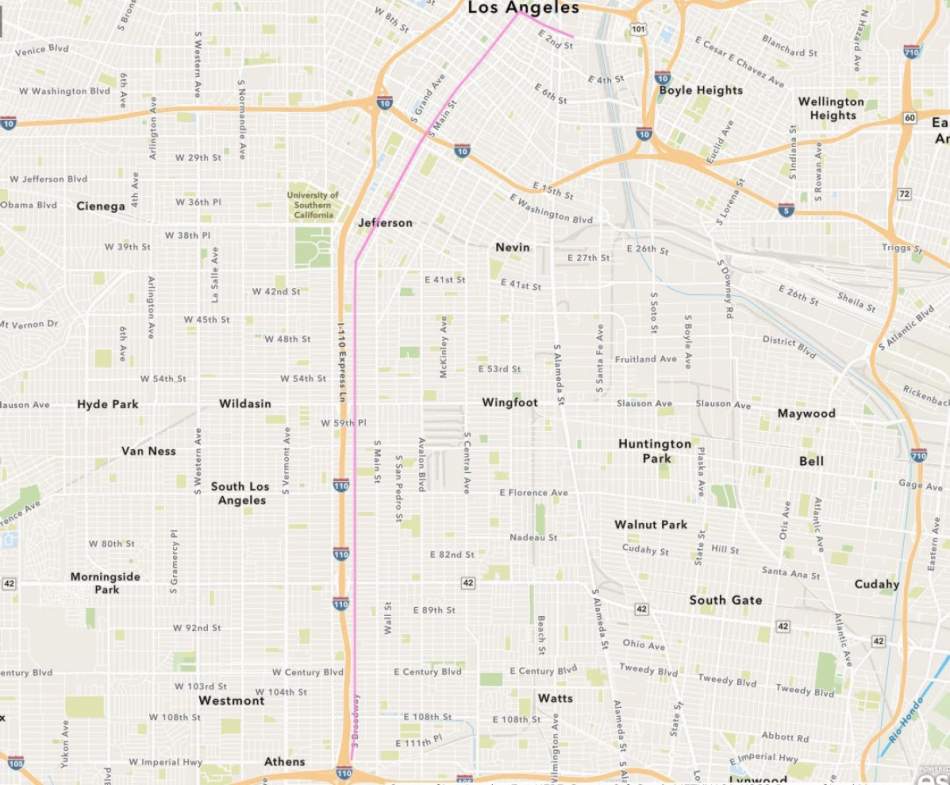 Proposed route of the Broadway bus rapid transit lineMetro
Proposed route of the Broadway bus rapid transit lineMetro
"Supportive BRT infrastructure in the Broadway corridor would ensure the most prudent use of service hours and improve travel speeds for our transit riders," reads the staff report, which notes that Broadway is poised for five-minute headways under the NextGen bus plan. "In addition, the Broadway corridor has been identified for multiple potential improvements by the City of Los Angeles, which could be leveraged to advance a Broadway BRT corridor project."
Implementation of BRT lines on the remaining four corridors would be coordinated with the decennial review of Measure M, a time at which the Metro Board would have the opportunity to review the availability of funding. The first 10-year review of Measure M will occur in 2027.
The staff recommendation was contained within a larger report to the Planning Committee regarding minimum design and performance standards for future on-street BRT projects.
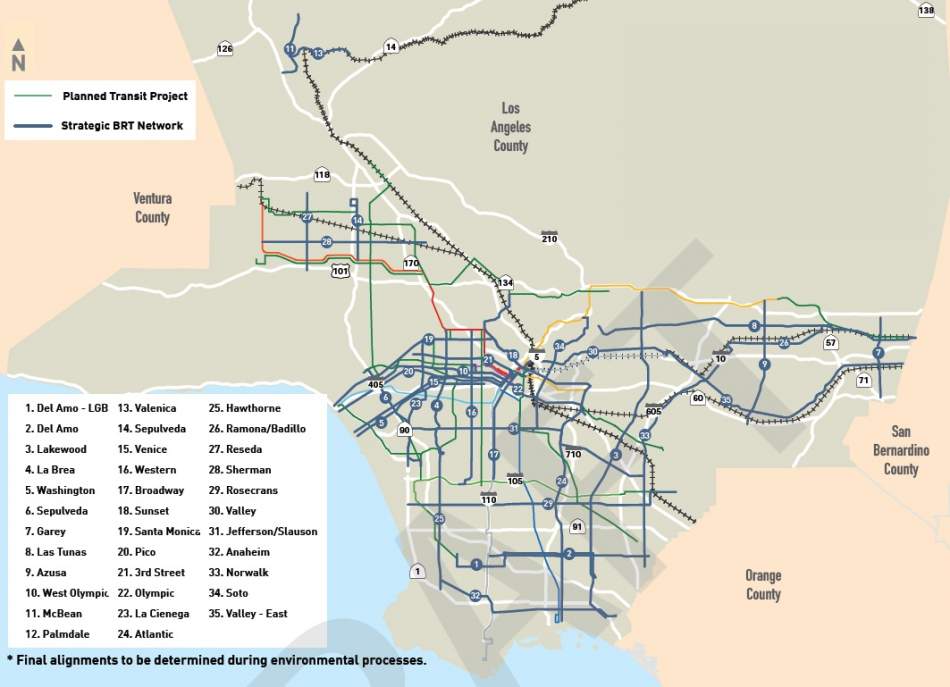 Metro future transit lines and strategic unfunded BRT corridorsMetro
Metro future transit lines and strategic unfunded BRT corridorsMetro
A new project on Broadway would join several other BRT lines already funded via Measure M, including new routes along Vermont Avenue, in the north San Fernando Valley, and between North Hollywood and Pasadena. Separately, Metro and the City of Los Angeles have recently worked to implement a series of peak-hour bus-only lanes on several corridors in Central Los Angeles, including 5th, 6th, Flower, and Alvarado Streets.
Implementation of the BRT Lines will occur in concert with the rollout of the NextGen bus plan, which the Metro Board adopted in 2020 in an effort to reverse Los Angeles County's flagging transit ridership. The plan, which calls for more frequent headways on the agency's highest ridership corridors, has been hampered in part by the COVID-19 pandemic, which has kept many of the agency's customers at home and led to draconian service cuts.
Another initiative set to launch this month, called the "Better Bus Program," proposes a five-year, $2.1-billion suite of improvements geared toward service improvements and customer series. Potential items which would be implemented through the program include building shelters at 60 percent of stops, the addition of new bus lanes, and expansions of all-door boarding and traffic signal priority.




